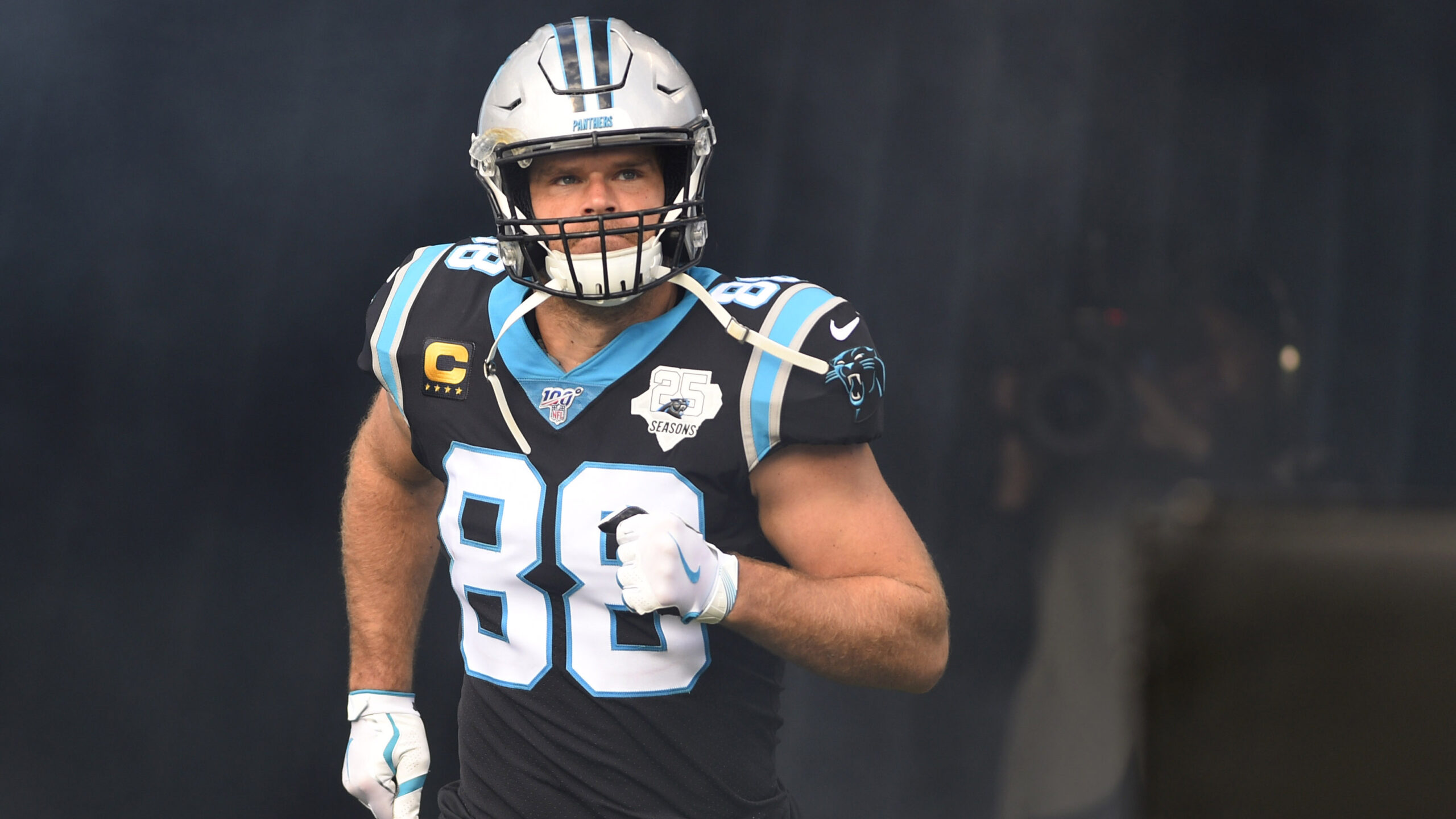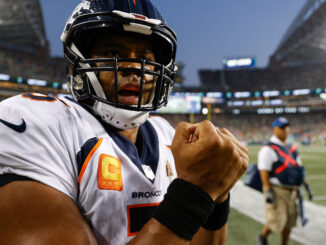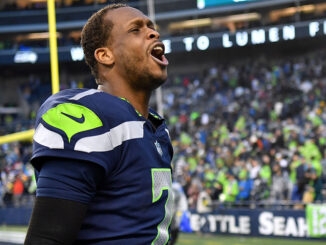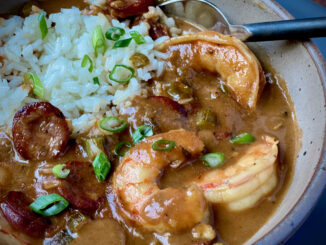
Whenever the Seattle Seahawks are allowed to resume organized team activities like practices, meetings, and workouts, there’s one position group that may need a bigger room: tight ends.
As almost any Seahawks fan will recall, the 2019 season was beset by injuries up and down the roster, and the tight end position was no different. In week 6 against the Cleveland Browns, the Hawks lost starting tight end Will Dissly to a torn achilles, his second season-ending injury in as many years.
For the team, the offense, and all of us fans watching, the slo-mo replay of Dissly going down…it was a punch in the gut.
Fortunately, it was also a bit of a wake-up call for the organization about needing depth at the position. And from what we’ve seen the team doing with an influx of tight ends on the roster for the approaching 2020 season, it appears they’ve either added too many or they have something new in the playbook.
And man oh man do I hope it’s the latter.
HOW MANY IS TOO MANY?
The Seahawks currently have nine tight ends (yes, nine) under control, while historically they’ve only kept three or four on the final roster.
The Hawks have brought back several tight ends from last year’s roster, including Will Dissly, Jacob Hollister, and Luke Willson, as well as practice squad TE, Justin Johnson.
Additionally, the team brought in veteran tight end, Greg Olsen, on a one-year, $7 million contact. To read more about what I expect from Olsen, read this, and get excited about what he brings to the team.
Then in the draft, the team invested in more tight ends, with both Colby Parkinson from Stanford and Stephen Sullivan from LSU being picked in the fourth round and seventh round, respectively.
And finally, following the draft, the Hawks also picked-up undrafted TE free-agents, Tyler Mabry from Maryland and Dominick Wood-Anderson from Tennessee.
In true Seahawks style and tradition, each one of these players will have to compete for their roster spot. Nobody makes the team because of their experience or contract, regardless of past performance or one’s highlight reel.
On the Seahawks, you must compete at practice to earn the right to compete in games.
Head coach, Pete Carroll, addressed the larger-than-usual cast of tight end characters on the team this year. “We’re really excited. You’re going to hear me every time go right back to competition. It can’t be better than this one. The guys are different too. We have unique players.”
And yet, how many of these nine tight ends ultimately earn a place on the team or fall victim to someone else’s work ethic depends largely on how many of the final 53 spots are designated for tight ends. As I said, in the past, the Hawks have only kept three or four TEs, but 2020 may be a different story.
Could this team see five tight ends suit up on Sunday’s this season?
WHO MAKES THE FINAL CUT?
At this point, I think it’s fair to slice these nine players into four basic segments based on their likelihood to make the final roster: hard yes, soft yes, and no.
The hard yes group are our locks. I think it’s safe to say Olsen and Dissly are our two best options to start. Obviously, either of these guys could fail to perform or more likely (especially for Dissly) get hurt, but aside from that, I think you can expect to see these two catching quite a few passes this year.
The soft yes guys, while clearly behind Olsen and Dissly, are more likely to see playing time than the rest. These are our first backups—our primary options, should one of those hard yes guys go down. Last season, when Dissly suffered his injury, it was Hollister who leapt from the practice squad to the starters and he made a bit of a splash in the process. Joining Hollister this year, I think you can expect Luke Willson and maybe, if the Hawks settle on five TEs, fourth round rookie, Parkinson could round out the position group.
The report on Parkinson is particularly sunny, with 710 ESPN Seattle’s Jake Heaps saying “Colby Parkinson has the size, the range and the length to be a very good receiving tight end in this league.” He went on to say, “This guy didn’t drop a single pass in the 2019 season. He doesn’t have blazing speed but he had a really good understanding of routes and space. He wasn’t just used as a slot tight end, he was used all over the field.” And finally added, “as an outside receiver, they (Stanford) were even willing to throw 50-50 go balls to him against corners and he did a really good job there as well.”
The one big concern about Parkinson is his weight. He’s six foot seven, but a little slim. Ideally, he’ll add another 15-ish pounds this summer to contend with NFL defenders. If he doesn’t make the starters this year, due to size or experience, expect him to be developed heavily on the practice squad and roll-out as a starting TE in 2021.
The no group is smaller, in that it’s just Johnson, Mabry, and Wood-Anderson. All three of these guys have value and potential, but it’s a stocked room this year and I don’t see a realistic path for any of them to make the cut. I anticipate them either winding up on the practice squad or being scooped up by another team.
Additionally, the Seahawks may plan to trade one of their higher-ranked TEs and slide everyone up one spot, but we’ll see how things shake out.
Also, keen-eyed readers will have noticed my obvious omission of seventh-round rookie, Sullivan, and the reason for this is simple. From the combine and draft, Sullivan’s been considered a very versatile pass catcher and has both tight end and wide receiver potential. So, I anticipate the hawks stashing him in the less-overrun WR group for now, with a down-the-road role on the team as a tight end.
WHAT IS THE PLAN?
We won’t know what the Seahawks are planning to do with their embarrassment of tight ends until the season gets underway, but if I was going to speculate…
I can envision a new Seattle offense that utilizes the tight end position to great effect in 2020 that we’ve seen in the past. One that uses two tight ends with more frequency and ultimately, more success.
If these tight ends can run block as well as pass catch, they could easily spend many more snaps on the field than other teams, essentially disguising Seattle’s somewhat predictable run-first offensive approach to a greater degree.
Over the course of Russell Wilson’s tenure as the leader of the Seahawks, he’s never really had options at tight end like he does this year. From both a diversity-of-skills and depth-at-position perspectives, the 2020 season is shaping up to potentially bring something new to the field.
How many times have you heard the local or national media suggest the Hawks “unleash” Wilson and let him throw more? Way too many too even count.
But maybe the 2020 season, in all it’s baked-in oddity, offers an opportunity to actually make good on the request. But then again, it’s the Seahawks, and they almost never do the obvious thing. I predict that if we see more tight end usage this year, it will almost certainly be due to the player’s ability to conceal whether they’re lining up to block a runner or run a route.
Assuming the five guys (Olsen, Dissly, Hollister, Willson, and Parkinson) I mentioned can all do that effectively, and that’s no small task, I think the Seahawks offense could pack a powerful short-to-mid range pass attack, which would nicely compliment the already-potent rushing and deep ball attacks we’ve come to expect from Carroll, Wilson and rest of the roster.
As with everything these days, we’ll have to wait and see when the season actually starts and what the final roster actually looks like before any of these predictions can be verified. But personally, I’m optimistic that the abundance of athletes offers enough firepower for this season and well beyond.
If the short-term talents of Olsen can prove a new offensive scheme, key draft picks like Parkinson could be foundational to perfecting that scheme in the seasons to come. And that could be quite a dominant team.
Go Hawks!




